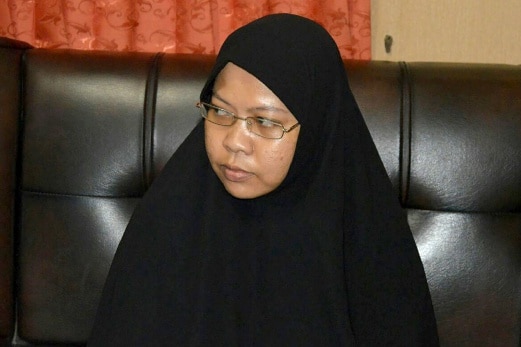THERE are three developments that might prove influential in shifting Southeast Asia’s terrorism landscape this year and beyond. These are the establishment of the Islamic State’s satellite caliphate in the southern Philippines, the return of foreign fighters from Syria to their home countries and the employment of female terrorists as occurred in Indonesia late last year.
The last of these three seems to have captured the most media attention recently. The news broke out when Dian Yulia Novi, 27, was arrested along with her husband of three months for plotting to mount a nefarious suicide attack with a weaponised rice cooker at Jakarta’s State Palace during the changing of the guard ceremony.
Subsequent sting operations by the police resulted in the detainment of two more women linked to Dian’s cell and another who was groomed to blow herself up in Bali.
Despite instances from the past, the issue of female terrorists is a marginal aspect in Indonesia’s terrorism discourse. The public’s unfamiliarity with the idea of women’s involvement in violent campaigns can be attributed to the narrative of women as inherently peace-loving, unenthusiastic media attention and the largely patriarchal society in the country.
The arrests have prompted top ranking security officers and analysts to suggest that the terrorist campaign in Indonesia is entering a new chapter. Such a claim, however, raises the question of how exactly Dian and her deadly sisters have altered the terrorism landscape in the country, if not the region. Some answers are offered here.
FIRST, while Dian and others are hardly the first detained female terrorists in the country, they are the first ones to be integrally involved in the formulation and near-execution of a suicide attack. Prior to this, Indonesian female terrorists mainly assumed a supportive role in any terrorist campaign. This pattern was broken by the arrest of three female insurgents of Mujahidin Indonesia Timur in central Sulawesi last year.
However, none of them came close to being a suicide bomber in the way that Dian and the fourth woman in her group did.
SECOND, the fact that these arrests gained so much traction in society, despite the monumental failure of the scheme, suggests that the main weapon of female terrorists is psychological. Even without inflicting any physical harm, Dian and her group still managed to impose a sense of terror and insecurity among a public unaccustomed to the image of women strapping bombs to their body.
The media’s coverage of the plot also exacerbated this fear.
THIRD, Dian and her group offer a clue to the proliferation of these female terrorists in the time to come.
As IS’s central caliphate in West Asia suffers major drawbacks from ongoing military offensives, it might resort to activating its affiliates in peripheral areas, such as Southeast Asia, to preserve its image as the terrorist powerhouse of the day.
This might extend to the use of more female terrorists for maximum psychological impact.
Additionally, Dian’s televised interview following her arrest may have inspired other radicalised women to finish what she started. The interview offered insights into Dian’s modus operandi and why she chose the path of terrorism. At one point, she articulated her displeasure with the lack of space in the Indonesian public sphere for a conservative expression of Islam.
A burqa-clad woman, she noted how mainstream society viewed her as an alien amongst them. Perceptions of marginalisation and deprivation of religious expression motivate radicals to participate in local terrorist networks or to migrate to Syria and Iraq. These are gender neutral drivers that arguably affect the decision-making process of men and women equally.
There is a tendency to include gendered motivations that distinguish specific driving factors between men and women when discussing the issue of women terrorists. Proponents of gendered motivations tend to assume that women terrorists are primarily driven by specific traumatic experiences, such as rape and the loss of a husband or children.
While there are merits to engage in such a debate intellectually, the fact remains that gender as a variable has little standing in the security realm.
The layman’s perspective that views women as, first and foremost, emotional beings clouds acknowledgement of women’s agency and rational prowess.
We cannot entirely discount gender-specific experiences and social constructs that motivate individuals to radicalism and even violent extremism.
However, it must be noted that there is an overlap of factors that motivate both men and women to take up arms. The grievances towards foreign policy mishaps, the desire to lead an adventurous life, the imperative to atone for past sins and Dian’s own sense of marginalisation are among non-gender-specific reasons exacerbating the radicalisation process of both men and women.
Going forward, it is important not to discount or dismiss the participation of women in terrorism. Dian alerted us in this region that women, too, may be driven to a violent end under the right — or, in this case, wrong — circumstances. It is equally important to be apprised of the motivations that drive people like Dian to such extremism. The varied backgrounds of detainees in this region have shown that there is no single terrorist profile and that individuals can be persuaded to destroy property and life regardless of gender, age, education or employment. Men and women may have their respective roles in society but, as Dian and many like her have proven, roles sometimes defy expectations. We would do well to bear that in mind to avoid being blindsided by changes in the terrorism landscape.
This article first appeared in New Straits Times on 7 February 2017.





